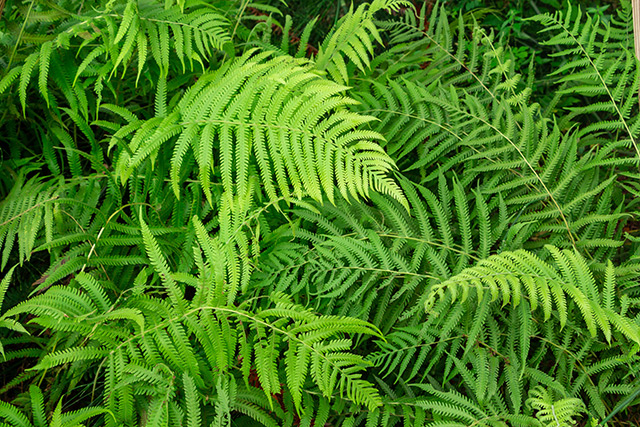Is this Chinese fern the key to preventing arsenic poisoning?
12/20/2019 / By Grace Olson

Arsenic is a natural element that can be found in many things – like soil and groundwater. The latter, in particular, presents a problem. Inhaling or swallowing the element has severe – even fatal – consequences. People who are especially vulnerable to arsenic poisoning (or arsenicosis) include those who drink or use groundwater and those who live near and work in mines.
Getting rid of arsenic is a difficult and costly process, but experts have found a plant that can withstand very high doses of this poisonous element. The brake fern (Pteris vittata), in particular, has the incredible ability to absorb high amounts of arsenic. While plants are naturally more tolerant of arsenic than animals, the brake fern can tolerate up to 1,000 times more than a regular plant.
The brake fern is native to China, but it also thrives in other places with humid climates, including South America, subtropical Africa, Asia and Australia. Its high arsenic tolerance coupled with its abundance makes it a promising solution to arsenic poisoning.
A high tolerance for a powerful poison
The brake fern has the remarkable ability to thrive in environments with high amounts of arsenic. In a recent study, researchers offered two possibilities that may have caused this interesting ability.
The first theory states that it is a defense mechanism: Since herbivores are less likely to eat a plant with arsenic, the brake fern absorbs more of it – developing a tolerance to the element over time.
However, researchers are more partial to the second theory. It suggests that the brake fern evolved in a place that did not have sufficient amounts of phosphate. Plants need phosphate – the combination of phosphorus and oxygen – to convert other nutrients into materials they can use to grow properly. When plants absorb too much of arsenic, it substitutes itself for phosphate in cells, which disturbs cell functions that require the latter. The theory suggests that in brake ferns, arsenic has fully replaced phosphates, making them crucial to survival.

In one study conducted by researchers from Purdue University, they found that there are three compounds that are responsible for brake fern’s ability to hyper accumulate arsenic. These are:
- PvGAPC1, which has a high affinity with arsenate ion
- PvGSTF1, which helps break down arsenic
- PvOCt4, which controls the transfer of compounds
These three compounds are necessary for the brake fern to properly process arsenic. After the roots absorb arsenic, PvGAPC1 converts it into 1-arseno-3-phosphoglycerate. PvOCt4 then pumps the converted arsenic to vesicles which can process the element further. Once inside these vesicles, the arsenic breaks down to release arsenate, which PvGSTF1 further reduces to arsenite and stores the fern’s vacuoles. In this manner, brake ferns have the ability to survive in arsenic-rich environments for a long time.
Using brake fern for arsenic treatment
Because of its unique properties, researchers have suggested the idea of using brake ferns to collect arsenic from the soil. (Related: Signs, symptoms, and sources of arsenic poisoning.)
Cleaning arsenic out from soil is an expensive and effort-extensive process. Specialists must first collect the contaminated soil, remove the arsenic, store the arsenic somewhere safe, and then replace the dirt with clean soil. Considering the number of mines, underwater wells and farms, this is not a feasible method.
The study, which first discovered brake fern’s ability, found that planting these ferns can reduce the arsenic content in soil by as much as 50 percent. Not only that, they are easily planted, maintained and propagated. After letting them grow for a few months, specialists can collect the plants, extract the arsenic, and properly store it. Additionally, the arsenic is already filtered and diluted, making the extraction process a lot faster.
Researchers are now looking for other plants that harbor the same abilities as brake ferns. It becomes clear that plants are becoming viable solutions for removing toxic chemicals out of the environment.
Find out more about how arsenic affects the environment at Environ.news.
Sources include:
Submit a correction >>
Tagged Under:
arsenic, arsenic poisoning, arsenic treatment, Chinese fern, environment, high tolerance, natural solutions, Natural Treatments, Plants, research, soil health, soil nutrients, trees, water health
This article may contain statements that reflect the opinion of the author





















